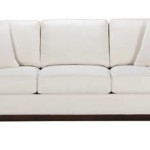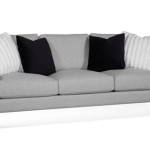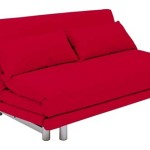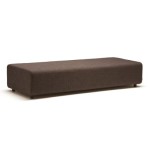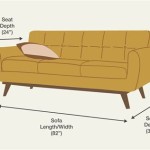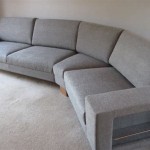How to Make Pillows for Your Sofa: A Comprehensive Guide
Sofa pillows, often called throw pillows or accent pillows, serve both functional and aesthetic purposes. They provide support and comfort while simultaneously enhancing the visual appeal of a living space. Creating custom sofa pillows allows for personalization, cost-effectiveness, and the opportunity to perfectly match existing decor or introduce new design elements. This article provides a detailed guide on how to craft sofa pillows, covering materials, construction techniques, and design considerations.
The process of making sofa pillows generally involves selecting fabric, determining the size and shape, cutting the fabric, sewing the pillow cover, and filling the pillow. Each step requires careful consideration to ensure a high-quality and visually appealing final product. The complexity of the project can range from simple square pillows to more intricate designs with embellishments or unique shapes.
Key Considerations Before You Begin
Before embarking on the pillow-making process, several fundamental decisions must be made. These choices directly impact the final product and contribute to overall satisfaction with the finished pillow. These considerations include fabric selection, size and shape determination, and filling material choice.
Fabric Selection: The choice of fabric is paramount. Consider the durability required, the desired aesthetic, and the ease of care. Common fabric choices for sofa pillows include cotton, linen, velvet, silk, and synthetic blends. Cotton is a versatile and relatively inexpensive option, suitable for everyday use. Linen offers a natural, textured look and is known for its breathability. Velvet provides a luxurious feel and adds a touch of elegance. Silk is delicate and best suited for decorative pillows that will not be subjected to heavy use. Synthetic blends, such as polyester or acrylic, are often more durable and stain-resistant, making them ideal for households with children or pets. The fabric's weight and weave also matter; a heavier fabric will generally hold its shape better and withstand more wear and tear. Always pre-wash the chosen fabric to prevent shrinkage after the pillow is completed.
Size and Shape Determination: The size and shape of the pillows should complement the sofa and the overall room decor. Common sizes for square pillows range from 16x16 inches to 24x24 inches. Rectangular lumbar pillows are popular for providing back support and are typically around 12x20 inches or 14x22 inches. Round or bolster pillows can add visual interest and break up the monotony of square and rectangular shapes. Consider the scale of the sofa; larger sofas can accommodate larger pillows, while smaller sofas may be overwhelmed by oversized pillows. Measure the sofa and experiment with different pillow arrangements to determine the most aesthetically pleasing and comfortable configuration. Draw sketches or use online design tools to visualize the final arrangement before cutting any fabric.
Filling Material Choice: The filling material significantly affects the pillow's comfort and longevity. Common choices include polyester fiberfill, down feathers, feather-down blends, and shredded foam. Polyester fiberfill is the most affordable and widely available option. It is hypoallergenic and easy to care for, but it may flatten over time. Down feathers provide a luxurious, soft feel and offer excellent support, but they can be more expensive and require specialized cleaning. Feather-down blends offer a balance of comfort and cost. Shredded foam is a durable and resilient option that maintains its shape well, but it can be heavier and less pliable than other fillings. Consider the desired level of firmness and the intended use of the pillows when selecting the filling material. Overfilling the pillows can make them uncomfortable and difficult to shape, while underfilling them can result in a limp and unappealing appearance.
Step-by-Step Guide to Making a Simple Square Pillow
This section outlines the process of creating a simple square pillow using basic sewing techniques. This method can be adapted for other shapes with minor adjustments to the cutting and sewing instructions. The following steps detail the entire process from gathering the necessary materials to adding the filling.
Materials Required: Fabric of choice (amount depends on the desired size and number of pillows), matching thread, sewing machine, scissors or rotary cutter, ruler or measuring tape, pins, iron, pillow filling (polyester fiberfill, down feathers, or shredded foam), and a zipper (optional, for a removable cover).
Step 1: Cutting the Fabric: Begin by determining the desired size of the finished pillow. Add seam allowances (typically 1/2 inch to 1 inch) to all sides. For example, to make a 18x18 inch pillow, cut two squares of fabric that are 19x19 inches or 20x20 inches, depending on the chosen seam allowance. Use a ruler or measuring tape to ensure accuracy and straight lines. A rotary cutter and cutting mat can provide more precise cuts. Accurate cutting is crucial for a professional-looking finished product.
Step 2: Sewing the Pillow Cover: Place the two fabric squares right sides together (the patterned or finished sides facing each other). Pin the edges together, leaving an opening of approximately 12 inches on one side for turning and stuffing. Sew around the perimeter of the square, using the chosen seam allowance. Remember to backstitch at the beginning and end of each seam to secure the stitches. For a pillow with a zipper closure, insert the zipper along the bottom edge of the pillow, following the manufacturer's instructions. This allows for easy removal and cleaning of the cover.
Step 3: Turning and Pressing: Carefully turn the pillow cover right side out through the opening. Use a point turner or a blunt object to gently push out the corners. Press the seams with an iron to create crisp, clean edges. Pressing the seams before stuffing will give the pillow a more polished and professional appearance. Pay particular attention to the corners, ensuring they are fully extended and well-defined.
Step 4: Stuffing the Pillow: Gradually stuff the pillow with the chosen filling material. Use your hands to evenly distribute the filling, preventing lumps or uneven areas. Add enough filling to achieve the desired level of firmness. Avoid overstuffing, as this can distort the shape of the pillow. Periodically check the shape and firmness as you add filling to ensure a consistent result. For shredded foam, add small amounts at a time and fluff the filling to prevent clumping.
Step 5: Closing the Opening: Once the pillow is adequately stuffed, fold the raw edges of the opening inward and pin them together. Use a blind stitch or a machine stitch to close the opening securely. A blind stitch creates an invisible seam, providing a clean and professional finish. If using a machine stitch, choose a thread color that matches the fabric and sew close to the edge. Ensure the opening is completely closed to prevent the filling from escaping.
Advanced Techniques and Design Options
Beyond the basic square pillow, numerous advanced techniques and design options can be employed to create more elaborate and personalized sofa pillows. These techniques include adding embellishments, creating custom shapes, and incorporating different closure methods. Mastering these techniques allows for greater creative expression and the ability to craft truly unique and eye-catching pillows.
Adding Embellishments: Embellishments can add texture, color, and visual interest to sofa pillows. Common embellishments include piping, fringe, buttons, embroidery, applique, and patchwork. Piping involves sewing a corded trim around the edges of the pillow, creating a defined and tailored look. Fringe adds a playful and bohemian touch. Buttons can be used as decorative accents or as functional closures. Embroidery allows for intricate designs and personalized monograms. Applique involves attaching fabric shapes to the pillow cover using sewing or adhesive methods. Patchwork involves piecing together different fabric scraps to create a quilt-like effect. When adding embellishments, consider the overall design and ensure the embellishments complement the fabric and shape of the pillow.
Creating Custom Shapes: While square and rectangular pillows are the most common, custom shapes can add visual interest and personality to a sofa arrangement. Round pillows, bolster pillows, and irregularly shaped pillows can create a more dynamic and eclectic look. To create custom shapes, start by drawing a pattern on paper or cardboard. Use the pattern to cut the fabric, adding seam allowances as needed. Sewing curved seams can be more challenging than sewing straight seams, so take your time and use plenty of pins to secure the fabric. Consider using a walking foot on your sewing machine, which helps to feed the fabric evenly and prevent puckering.
Alternative Closure Methods: While zippers are a popular choice for removable pillow covers, other closure methods can be used, such as envelope closures, button closures, and tie closures. An envelope closure involves overlapping fabric panels that create a pocket for the pillow insert. This method is simple to sew and requires no additional hardware. A button closure involves sewing buttons and buttonholes along the back of the pillow. This method adds a decorative element and allows for easy removal of the cover. A tie closure involves attaching fabric ties to the back of the pillow. This method is often used for decorative pillows and can add a touch of whimsy. The choice of closure method depends on the desired aesthetic and the functionality required.
Making sofa pillows offers a creative outlet and provides a cost-effective way to customize your living space. By understanding the fundamental principles of fabric selection, size and shape determination, and construction techniques, you can create beautiful and functional pillows that enhance the comfort and style of your home.

Quick And Easy Floor Sofa To Make In Few Minutes I Made A Diy For

Diy Playroom Floor Pillows

How To Make Pillows In Minutes Town Country Living

How To Mix Match Pillows On A Sofa Calgary Ab

How To Style Your Throw Pillows

How To Make Your Own Diy Yarn Fringe Pillow Sugar Cloth

Diy Couch How To Build And Upholster Your Own Sofa

9 Diy Throw Pillows Sew And No Options The Mommy

4 Secrets To Finding Upholstery Foam A Erfly House

Diy Couch How To Build And Upholster Your Own Sofa

